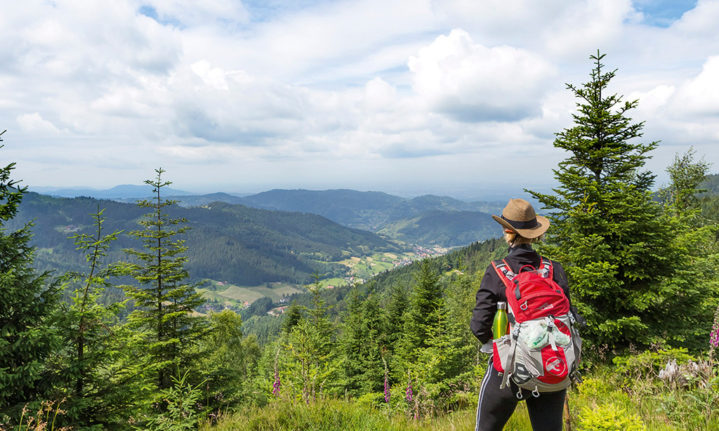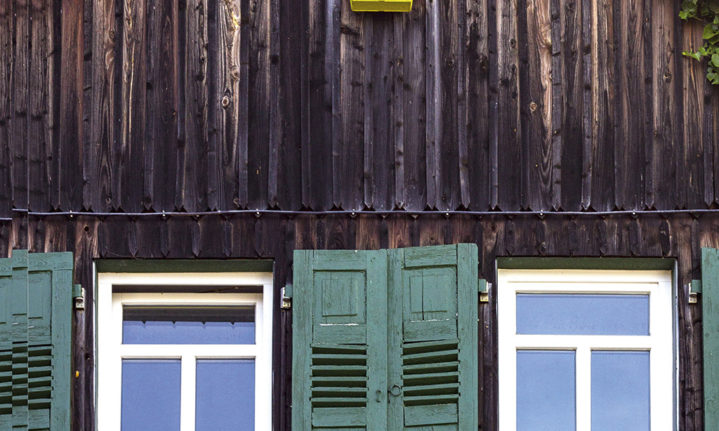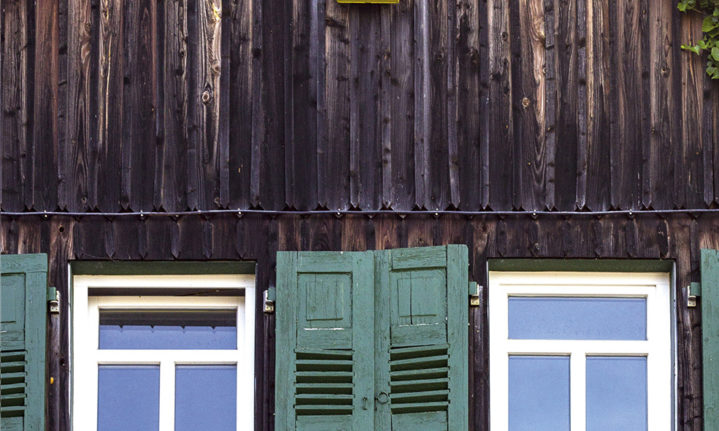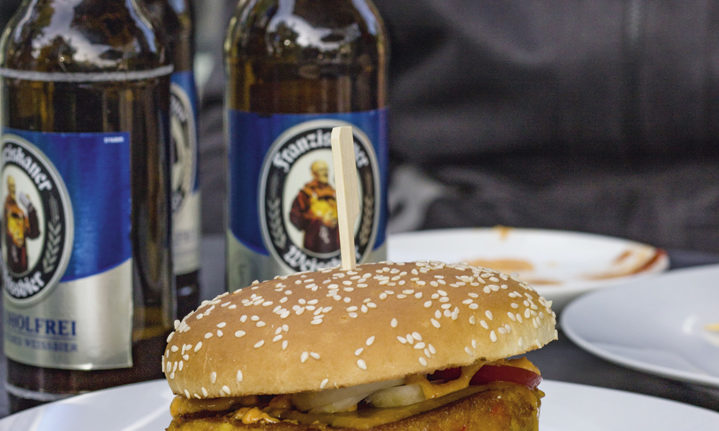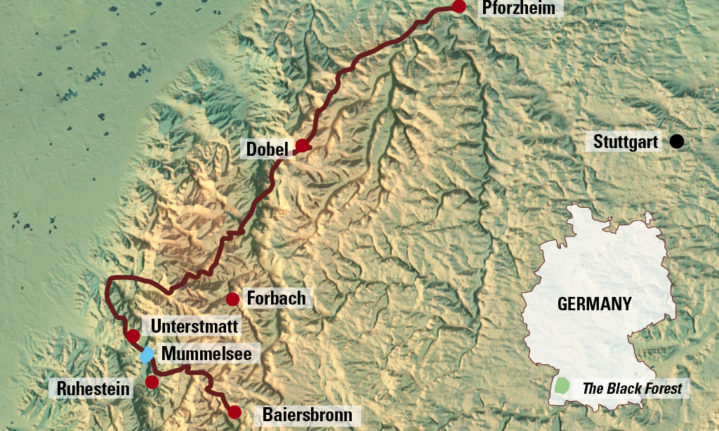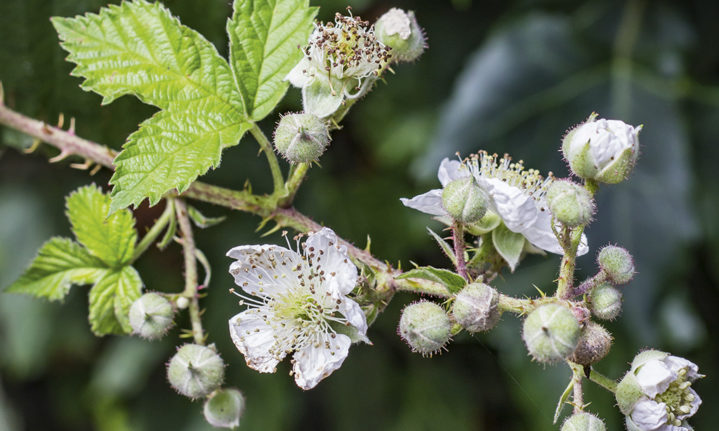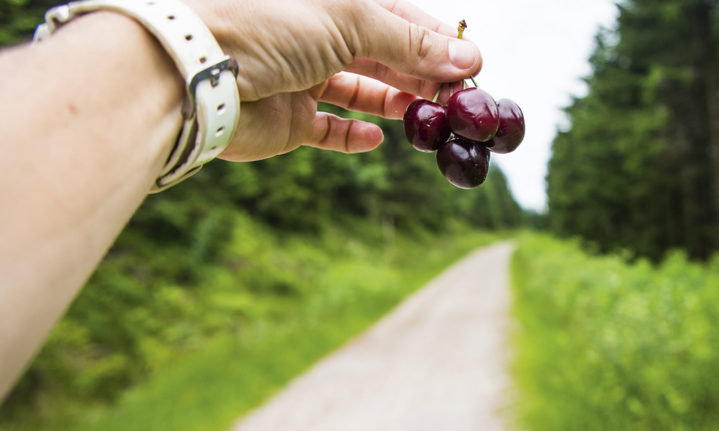Germany’s Black Forest is steeped in myth. A group of South Africans (and one Belgian) plotted an inexpensive walking holiday, combining affordable accommodation and free public transport to this fabled forest.
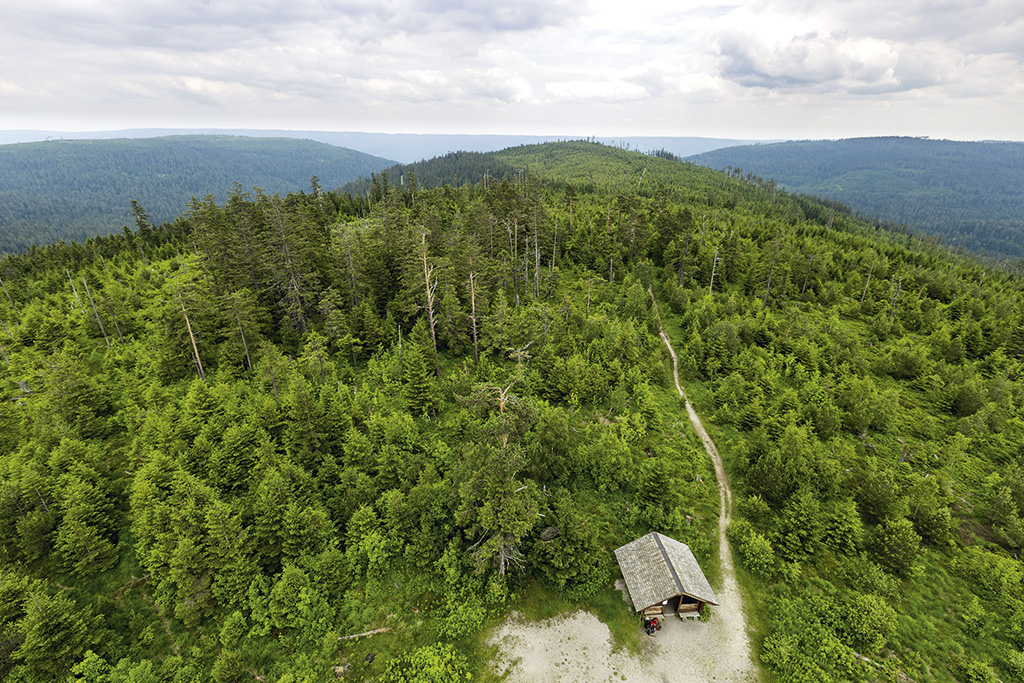
On a very clear day, you can see from the top of Friedrichsturm in Badener Höhe (from where this photograph was taken) all the way to the Swiss Alps. Image: Kati Auld.
The novelist Hermann Hesse once said, ‘Whoever has learned how to listen to trees no longer wants to be a tree.’ I’m not sure what he was going on about. I’ve spent the last few hours hiking in the Black Forest (Schwarzwald), listening to the swishings of trees, and right now, all I want to do is be a tree.
Light green leaves splash merrily off the boughs above us like frothy Champagne; pines and their down-turned needles disapprove of our life choices. Trees are excellent.
They don’t have feet, for one thing, so they don’t feel any urgency about being anywhere else. That’s a luxury we don’t have, as we put one foot in front of the other, heading towards our first overnight stop at Dobel before sundown.
The Black Forest sweeps through the south-west of Germany, tickling France and spreading down to Switzerland in the south. There are three main routes – Westweg, Mittelweg and Ostweg – all following the spine of the mountains from north to south. There’s also a fine weave of lateral routes into the mountains, creating a cross-hatch that covers the range.
We’re doing a four-day foray on the Westweg, which in its entirety would take at least two weeks to hike. We’ve picked the most environmentally diverse section from Pforzheim, a city which was painstakingly rebuilt after being decimated in World War II, towards Dobel, Forbach, Unterstmatt and down to Ruhestein.

Top: Once you get above the treeline, the views are endless; typical village architecture of the region.
Bottom: The Westweg is also indicated by a sign with a red diamond, which is never hard to find; a cold pilsner at Gasthaus Adler in Forbach.
From there I hoodwink our troop into tacking on a dog-leg into Baiersbronn. It has the highest concentration of Michelin-starred restaurants in Germany, a fact that does little to rouse the interest of my thrifty posse. So instead, like the witch in Hansel and Gretel, I lure them there with the promise of authentic Black Forest cake.
There are four of us on this trip through the green cathedral. Tyson, Chris and I were colleagues at Getaway – after many years of late nights in the office, writing and pilfering booze from the editor’s secret stash, we’re as thick as thieves and twice as sneaky. Ann, from Belgium, is not an alumnus of Getaway University, but has hiked South Africa flat anyway. All of us are very far from home.
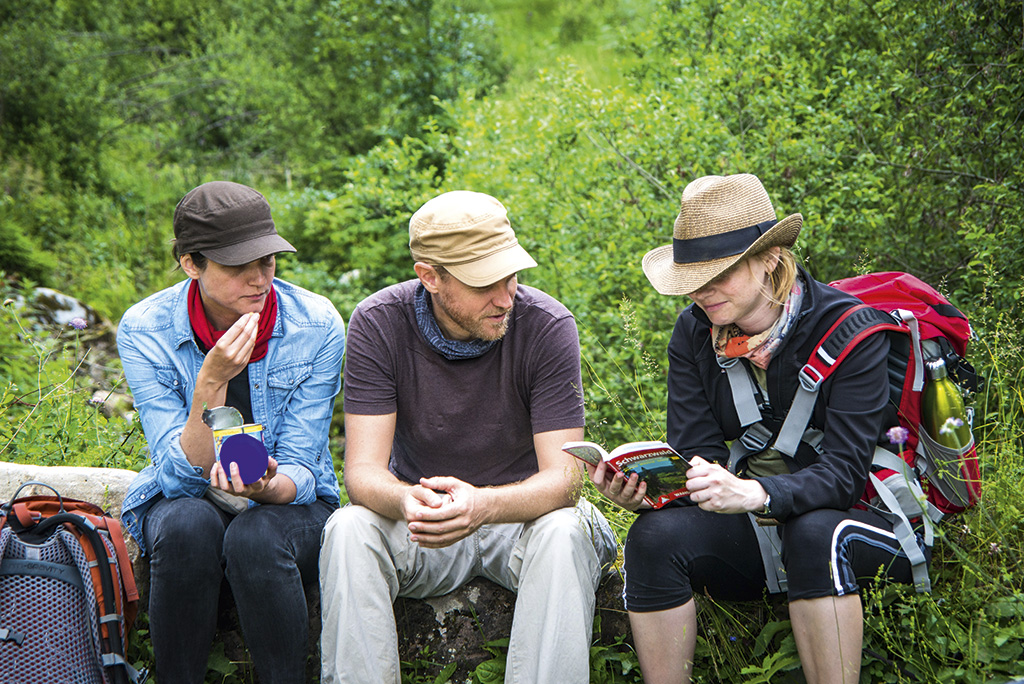
The gang, minus one photographer. Image: Tyson Jopson.
The Black Forest might be wild, but no part of it is exactly remote. There’s a smattering of little towns folded into the mountains, which is ideal for the lazy hiker. Nobody wants to take camping gear on an international flight, and with enough chintzy B&Bs there’s no need. You can create your own slackpacking route, filling your lungs with crisp air and crunching along wild, overgrown paths, and still fall into a soft bed after a warm meal at the end of the day. Well. Hypothetically.
We arrive, on our first day, with the particular combination of footsore and beer-thirsty that you can only get after hiking, to find that our first stop, Dobel, is closed. The whole town. Rural Germans are big believers in the ruhetag (rest day) – and in Dobel, it turns out to be on Thursday (so much for the German work ethic). We manage to find a little food truck that serves mediocre burgers, and choke down the indignity of warm non-alcoholic beers – the only drinks available.
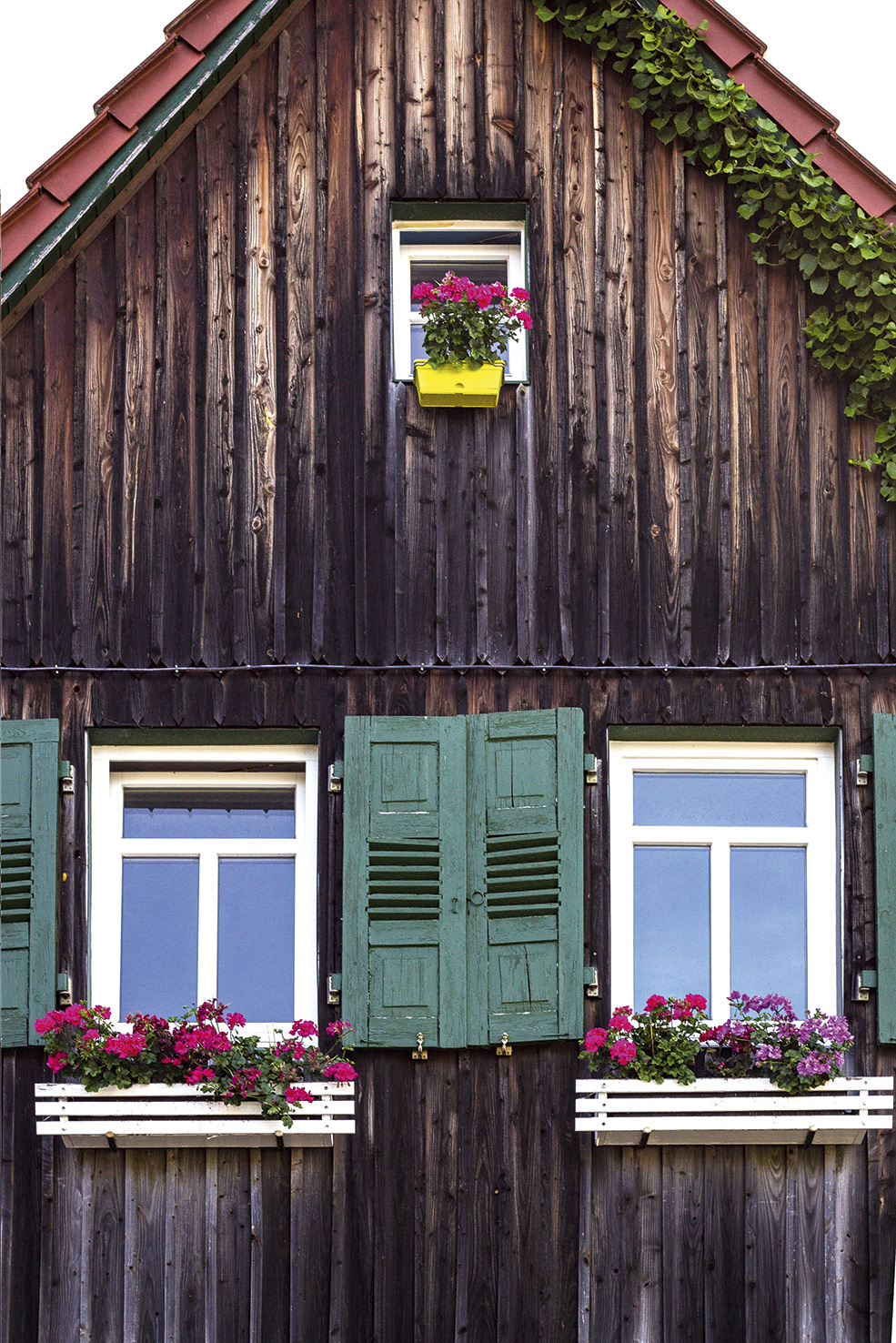
Germans take great pride in their window boxes. Image: Tyson Jopson.
Day two starts early. The toughness of the previous day’s 27 kilometres has shocked us into a semblance of intelligence, so we take a bus to nip seven kilometres off the trail using our Konus cards, which give visitors free access to public transport, and then take a taxi to the next trailhead.
It’s wilder here – the trail spikes through lush virgin forest, every stone covered with moss like nature’s padded cell. Just before we reach an ancient viewing tower, a red deer strolls out of the forest and stands blinking in the pathway ahead of us. It’s the reddest animal I’ve ever seen, practically glowing in the sunlight, and nobody breathes as it quietly takes us in. Then a shiver rolls down its flanks and it leaps off out of sight.
It’s not just the fauna that makes it feel magical here; you can’t talk about the Black Forest without talking about the murky power of the trees. That’s how the forest got its name, after all – the trees are so thick that they block out the light.
We amuse ourselves by identifying different kinds: happy pines and sad pines, beeches that splay out their branches like jazzhands. Wild strawberries send creepers reaching across the path, and butterflies flit among the trees.
It’s easy to tell when we’re coming closer to civilisation as we start to see piles of firewood alongside the trail, the tarps covering them as moss-crusted as everything else. We stay that night in a strange little caravan park outside Forbach, where the shower still takes Deutsche Marks as tokens. We sit on white plastic garden chairs, watching the swallows loop overhead in the dusk, and it feels like a scene remembered fondly from someone else’s childhood.

The forest surrounding the Herrenwieser See (a natural lake) is one of the oldest on the route. Image: Chris Davies.
The next morning is warm, and our legs feel looser as we head up a slow steep hill. There are more beech trees here, and their leaves catch the light like freeze-frame confetti. We’re getting into a rhythm now, although that might just be the painkillers. The forest opens up as we climb higher, until we’re finally on the lip of the mountain.
The sparse shrubbery suddenly feels wilder and more exposed, and it’s like we’ve become forest animals ourselves. Baby mountain pines dot the grass, and the trail is marked out with big slabs of granite.
When we find our accommodation for the night, an out-of-season ski lodge, we fall into plates of food – grilled sausages, venison goulash, buttery spätzle. There’s a bunch of German hikers here and we drink with them late into the night, as the forest grows darker around us. They teach us a toast, ‘We’ll never be as young as we are tonight again!’ Like most toasts, this is depressing or uplifting, depending on your general outlook.
After a quick and sombre 12 kilometres the next day, we find ourselves at a bus stop, and I’m thinking about Hermann Hesse again. Maybe what he really meant is that trees aren’t trying to be anything other than what they are, and it would be better for humans if we weren’t always striving for something ahead of us, or in the past. He would probably say that we should just be happy to be sitting here together on a bunch of twisted pine roots, nibbling on cherries, listening to the birds. It would be better if we weren’t already discussing the practicalities of buying a set of campervans and driving up and down the Portuguese coast, or figuring out the best place to go climbing in Belgium. We should just live in the moment. But humans are as humans do, and what can I say? I love trees. I still want to be one. Just as soon as I figure out what we’re doing next.
Although, looking at this ragtag group of reprobates, I do remember another thing Hermann Hesse said: ‘Home is neither here nor there. Home is within you, or home is nowhere at all.’ I guess we do agree about that one.

Plan Your Trip
Getting There
Flights from Joburg to Stuttgart start at R10,899 (travelstart.co.za). From there, Pforzheim (the gateway to the Black Forest and trailhead for most routes) is about an hour away by train – from R336 per person return (group tickets are available on selected days). bahn.de
When To Go
This is definitely a summer trip; plan to travel in June or July.
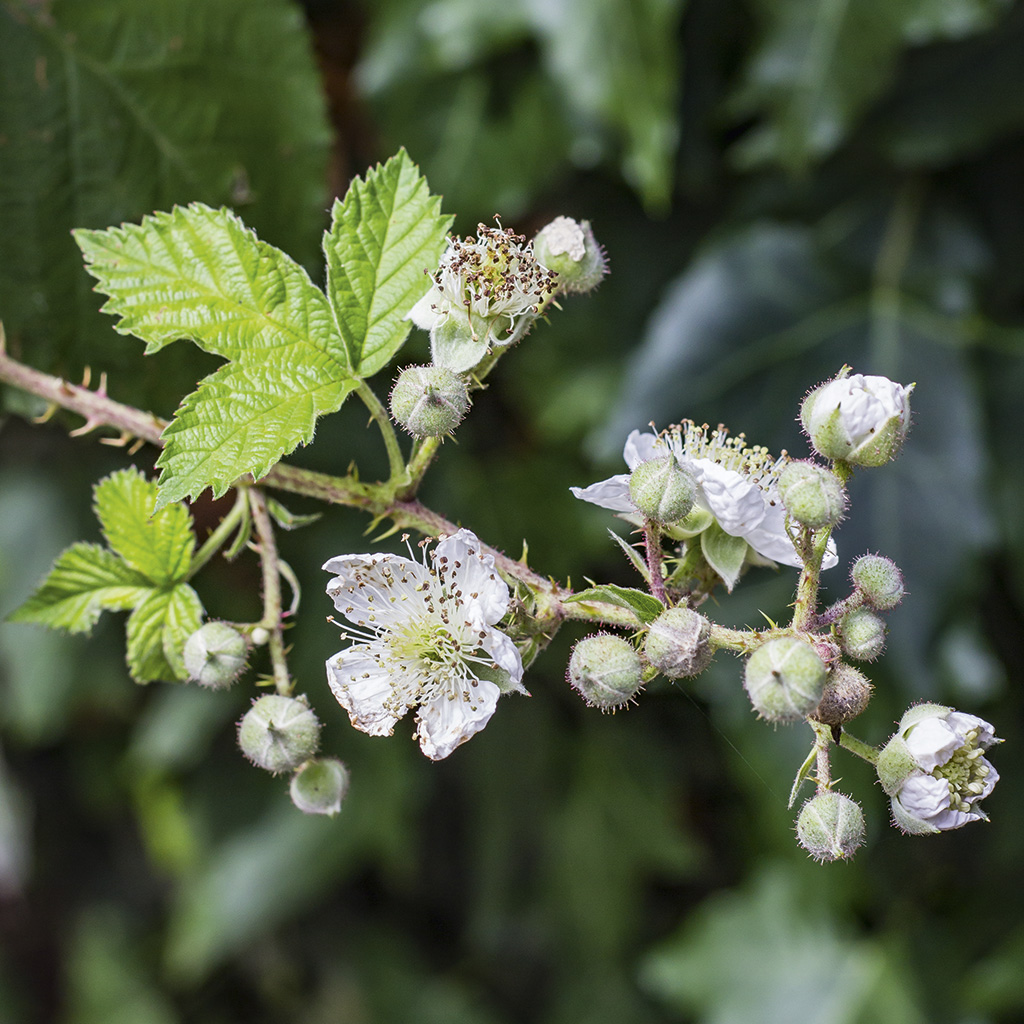
There are still blossoms in midsummer. Image: Tyson Jopson.
Getting Around
The beauty of this hiking trip is that you make your walking distances as long or short as you like by using public transport to skip the parts you don’t want to do. At most overnight stops you’ll get a Konus card from your host, which is valid for transport the following day (a few subregions don’t offer the card, so check before booking). blackforest-tourism.com/info/Konus
Need To Know
SA passport holders need a Schengen visa (R945), applied for at least three weeks prior to departure (visa-germany.co.za). Routes are well marked, but with so many of them it can get confusing. We relied on a free GPS app called Gaia. gaiagps.com
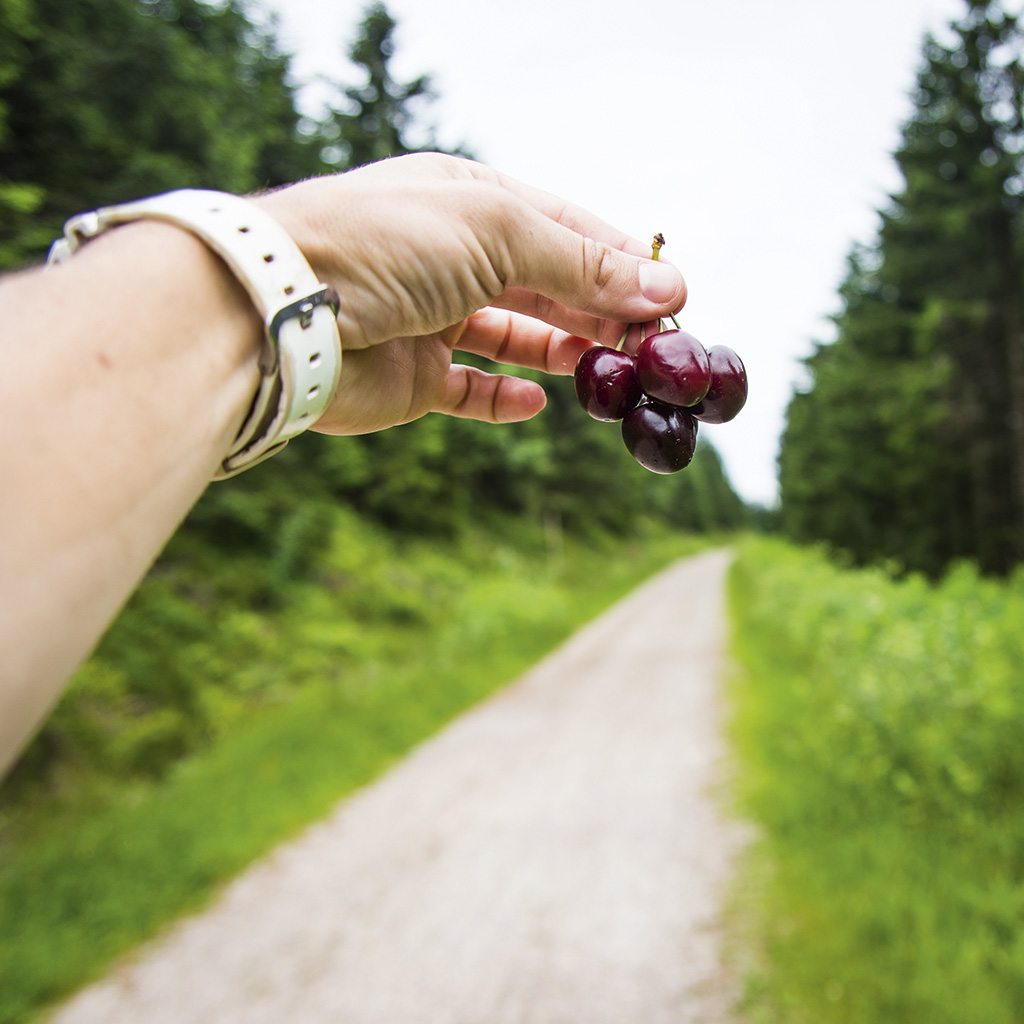
Cherries are the best hiking snack in the region. Image: Tyson Jopson.
What To Take
You don’t need sleeping kit or a tent but it’s always great to carry a camping coffee set. Wear proper hiking boots, pack anti-inflammatories and Compeed, magic blister cushions – worth every cent.
Stay Here
Gästehaus Hillmann in Dobel is run by an old dear and surprisingly affordable. From R284 pp sharing B&B. dobel.de
Campingplatz Erbersbronn is a delightfully trashy caravan park just outside Forbach. One caravan can fit four but I’d recommend springing for two. From R710 per caravan. campingplatz-erbersbronn.de
OchkopHf Stub, a divine little off-season ski lodge on the outskirts of Unterstmatt, was the treat of our trip. The on-site restaurant is excellent, and it even has an outside grill in case you have a yearning for braaied German sausage.
R339 pp sharing. hochkopf.de
Unmittelbare Nähe zum Nationalpark Nord-schwarzwald in Baiersbronn is great for groups. There’s a kitchen with self-catering supplies and a supermarket close by. From R1,000 (sleeps six). airbnb.com
Do This
Try maultaschen at Kupferhammer, a restaurant just outside Pforzheim. These big German dumplings are an uglier version of ravioli, and a regional speciality. They’re either served fried (better) or in a broth (still good). +49-723-167-712

A passable veggie burger in Dobel. Image: Tyson Jopson.
Swim in the Mummelsee.
This is one of the more popular lakes in the area – an archetypal black German lake, framed by majestic pines. mummelsee.de
Lunch at a Naturfreundehaus. There are a few of these backpacker-friendly houses in the area, and the one at Badener Hӧhe has excellent views. Beers from R35. naturfreunde.de/haus/natur freundehaus-badener-hoehe
Ride the ski lift at Ruhestein. It still runs in summer as a fairground ride (R47 pp) for lazy hikers. skilift-ruhestein.de
What It Cost
Our four-night/five-day trip, including all transport (inside the Black Forest as well as to and from Stuttgart), accommodation, food and supplies, cost R2,933 per person.

You never wonder if you’re lost for too long in the Schwarzwald. Image: Tyson Jopson.










